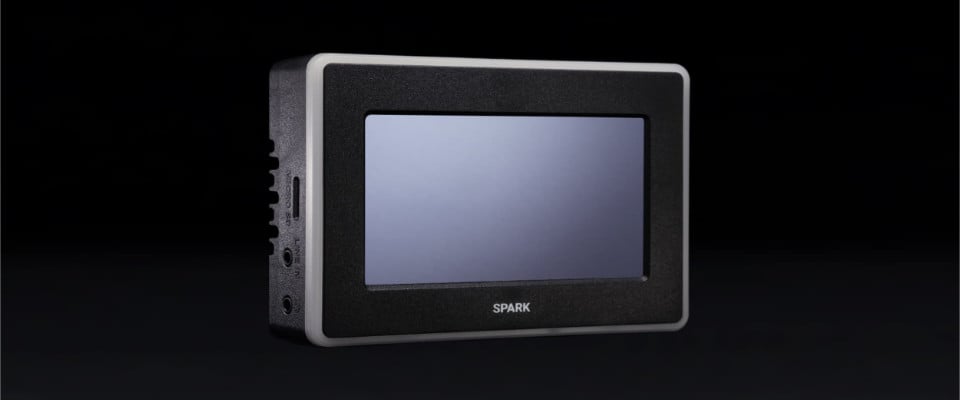VIDEO
Products
Streaming
Deliver flawless live video to any audience, anywhere
OTT Apps
Launch and monetize your own branded TV & mobile apps
Spark Encoder
Tap into hardware encoding that's compact and powerful
Broadcaster App
Go live straight from your phone or tablet with studio-quality control
Features
BoxCast Flow
Ensures smooth playback even on shaky networks
Sharing
Instantly clip, share, and amplify your broadcasts
Producer
Create professional streams right from your browser
Third-Party Encoders
Use the gear you love with our support of RTMP and SRT
AUDIO
RemoteMix
Mix live audio remotely from anywhere in the world
Compatible Mixers
Connect your favorite digital mixer to RemoteMix
INDUSTRIES
House of Worship
Reach and engage your congregation wherever they worship
Sports
Stream games with professional quality for fans everywhere
Local Government
Bring transparency and connection to your community broadcasts
Business
Power your corporate events, webinars, and live streams
LEARN
Blog
Insights, trends, and tips for the audio/video community
Tech Tips
Quick how-tos and deep dives on the latest streaming technology
Guides
Essential tips and expert strategies to expand your reach
Newsletter
Stay up to date with product news, best practices, and more
Podcast
Hear stories and strategies from our customers and experts
DISCOVER
Customer Stories
Explore real-world success stories to inspire your organization
Events
Join us at an upcoming conference and meet with our team
Webinars
Get all the details and register for our next live webinar
About Us
Discover our company's mission, values, and team story

Brett Bzdafka • August 28, 2025
Buying a live streaming encoder can feel overwhelming — especially when every option claims to be “reliable” or “professional.” This guide is here to cut through the noise. We’ll walk you through the essential technical requirements, practical features that actually matter during real-world streaming events, and a few smart bonus capabilities that make a big difference. If you’re serious about streaming and want to invest in gear that won’t hold you back, you’re in the right place.
Core Technical Requirements (and Why They Matter)
Practical Considerations You Can’t Ignore
Bonus Features Worth Paying Attention To
Our Top Choice (and Why It Stands Out)
Final Thoughts
Buying an encoder for live streaming is a big decision. While it's tempting to grab the first brand you recognize, doing a little research is always the smarter move.
Not all encoders are built alike. Their internal components and features are what truly determine your stream's quality, reliability, and long-term flexibility.
This guide provides a clear checklist of technical requirements to help you make an informed decision. Whether you're comparing options head-to-head or trying to rule a few out, these specs will help you separate the best options from the ones that could hold you back.
We know this seems like a long list, but we consider all of these must-have features for producing a professional live stream. Cut corners on a few of these, and it’s your viewers who’ll feel it — because once quality drops at the source, there’s no fixing it later.
Some of an encoder's most important features aren't purely technical, but they can still have a big impact on your stream. These features are especially crucial if you're streaming regularly or from different locations.
On their own, none of these things seem like dealbreakers — but skip too many, and using your encoder starts to feel like a hassle. A missing case or display might not seem like much until you’re scrambling mid-event. The more friction you remove upfront, the smoother and more dependable your live streaming process becomes.
Sure, your encoder needs to meet the basics — just like your car needs to pass its emissions test — but let’s be honest, it’s the extras that make the ride fun. These are the features that go beyond getting the job done and start making your encoder fun to use.
Imagine having all of this in one encoder. Spoiler alert: that encoder exists — and it checks every one of these boxes, plus everything we’ve already covered in previous sections.
BoxCast encoders are in a class of their own.
We didn’t just build our streaming encoders by copying everyone else. We spent years interviewing real users and refining our approach, releasing smarter, better hardware over time. Our journey began with our first flagship unit in 2013, saw a major upgrade in 2017, and a pro-level leap in 2018 — all culminating into our best encoder yet in 2024. This commitment to continuous innovation is what makes BoxCast different.
We help thousands of organizations stream successfully every day. And while our end-to-end platform plays a big role in that, a huge part of the equation is the hardware itself. Our latest encoder, the Spark, checks every box — technical, practical, and just plain fun to use.
Even better — while some encoder manufacturers charge $3,000, $7,000, or more, our latest hardware comes in at just $999 for the HDMI version or $1,299 for the 12G-SDI version.
Here are just a few of the standouts that make Spark so special:
Bottom line: there’s no better encoder at this price. Actually, scratch that — even against hardware that costs 2 to 4 times more, the Spark still gives you everything you could ask for in a live streaming encoder.
The market is full of streaming encoders — some are excellent, while others will leave you frustrated when it matters most. Hopefully, this guide has given you the clarity you need to confidently make the right choice.
We believe you deserve gear that supports your goals without compromise. If you're still weighing your options, let us know. We'd be happy to help you get started with a Spark, and since it comes with a 30-day money-back guarantee, there's no risk!
Check out what Spark has to offer.
© 2025 BoxCast. All Rights Reserved. | +1-888-392-2278